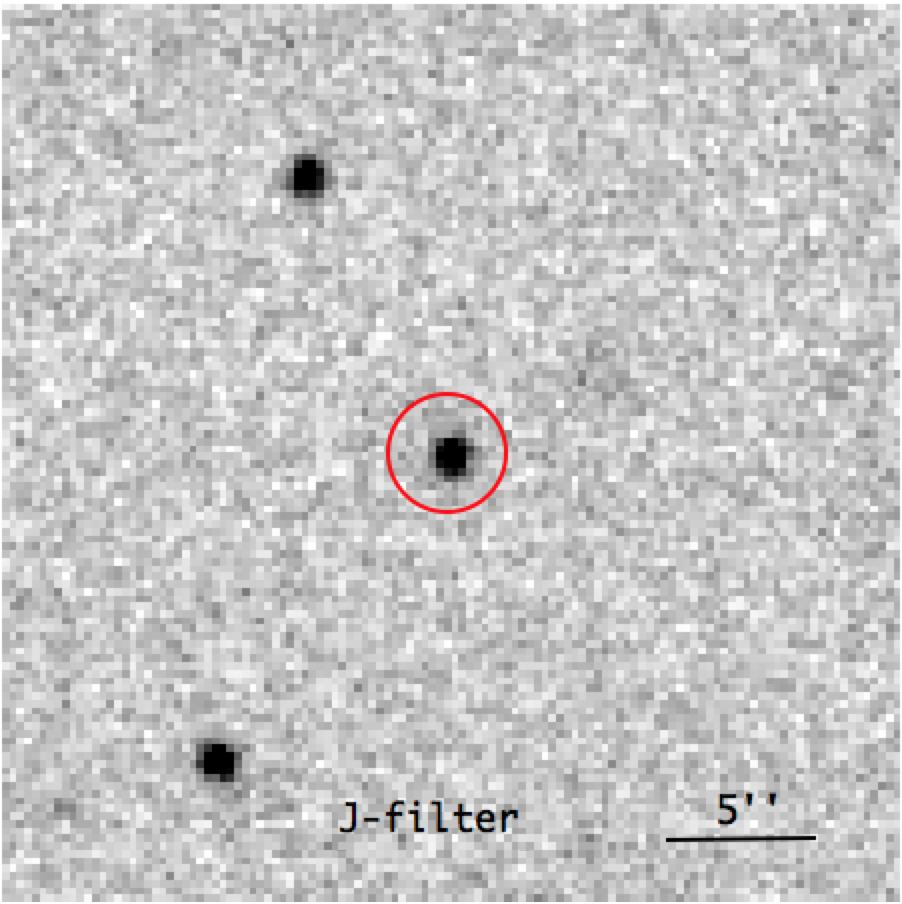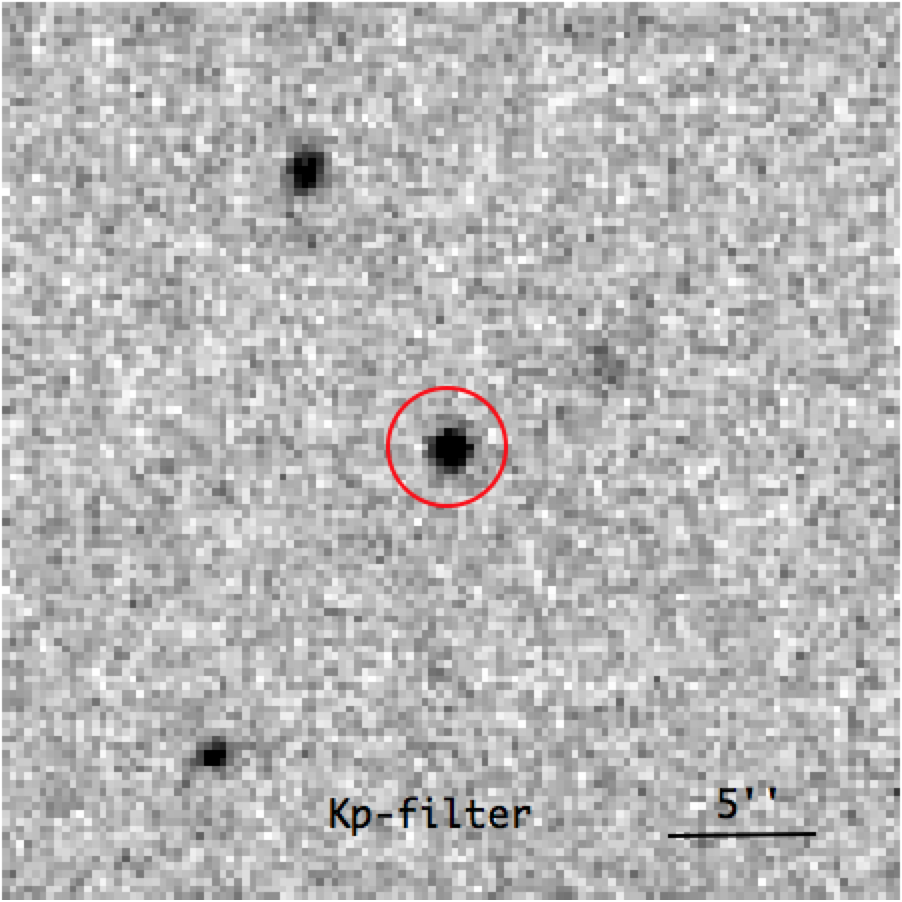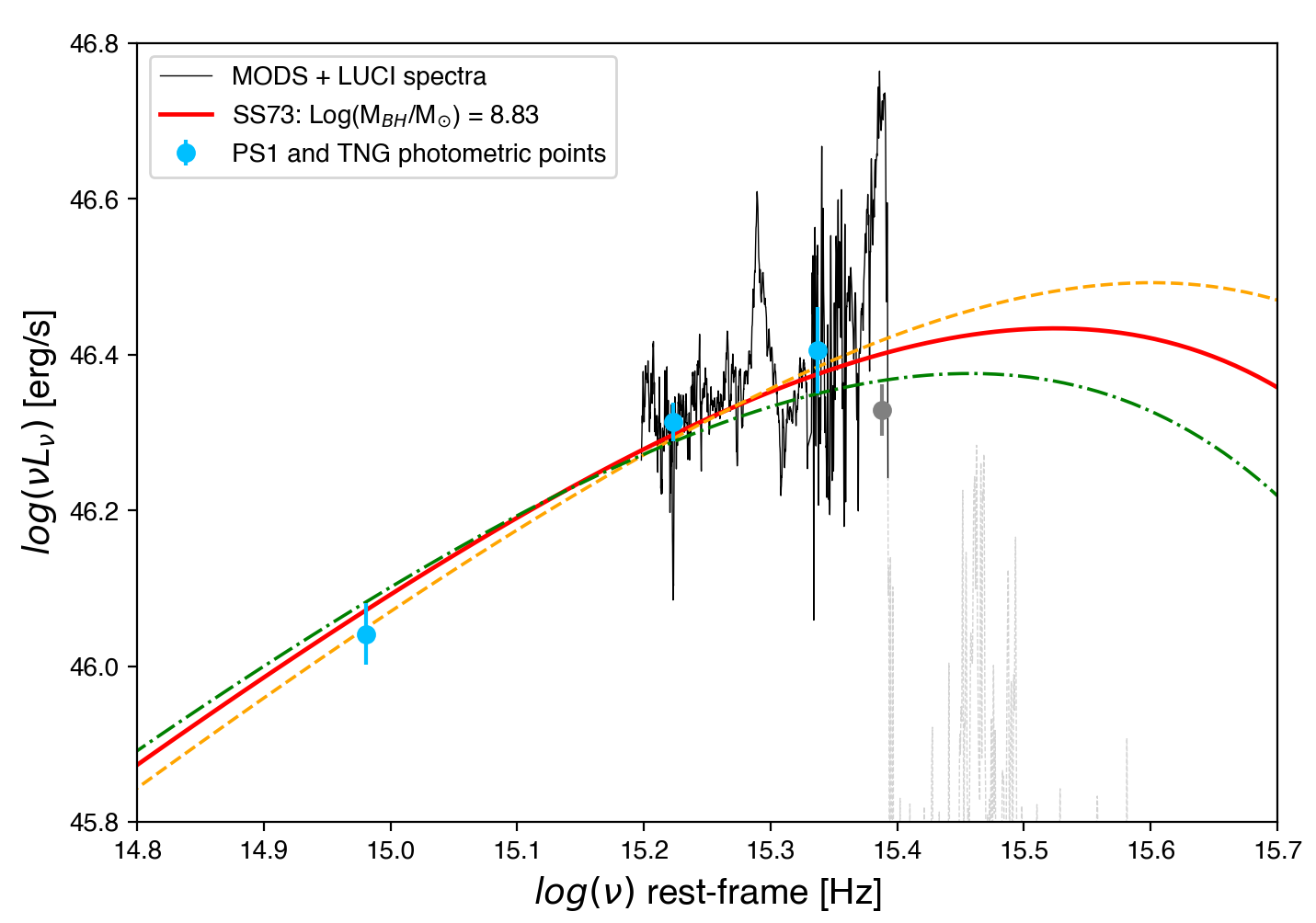The central engine of the highest redshift blazar
High redshift (z>6) Active Galactic Nuclei (AGNs) are direct probes of the Universe less than 1 Gyr after the Big Bang. They are fundamental laboratories to study the early growth of supermassive black holes (SMBHs). Radio-loud (RL or jetted) AGNs are those characterized by two collimated relativistic jets of plasma launched directly from the central SMBH and extended up to a few Mpc. We report on a study of PSO J0309+27, now the most distant blazar ever observed.
Blazars are radio-loud (RL) active galactic nuclei (AGNs) whose relativistic jets are seen at a small angle to the line-of-sight. Since the radiation produced by the jets is strongly boosted and not obscured along the jet direction, blazars are very bright and visible up to high redshifts, allowing the study of the RL population across cosmic time. Currently only a few objects of this type are known in the early epoch of the history of the Universe.
PSO J0309+27 is a NVSS radio source with radio Flux of S1.4GHz = 23.7 mJy selected as a z-dropout in the Pan-STARRS PS1 catalog. With the TNG, NIR imaging observations were carried out at J and K´ bands during the night of February 12, 2021 (Program A42DDT4) with the Near Infrared Camera Spectrometer (NICS) instrument under excellent seeing conditions (FWHM ~ 0.75 arcsec).

|

|
Fig 1: 0.5 arcmin × 0.5 arcmin J and K´ cutout images of PSO J0309+27 taken with the LF camera mounted on the NICS instrument. Its optical position is marked with a red circle of 2" of diameter
The NICS pointing was prompted by a spectrum taken with the MODS (Multi-Object Double Spectrograph) at the Large Binocular Telescope on October, 2 2019. The redshift measurement z=6.10±0.03 makes PSO J0309+27 the first blazar observed at z>6.0, when the Universe was only ~ 0.9 billion years old.
An accurate determination of SMBH masses of z>6 AGNs is a prerequisite to fully understand SMBHs physics, demographics (e.g., black holes mass function) and relations with their host galaxies. The high-z nature of PSO J0309+27 prevents the detection in the optical wavelength range of the CIVλ1549 and/or the MgIIλ2798 broad emission lines typically used for the black hole mass estimation following the so called single-epoch method. Therefore, we used a LUCI (LBT Utility Camera in the Infrared) observation in order to extend the wavelength range in the NIR band to detect the CIV broad emission line. On the basis of the CIV line width we estimated a mass for the central SMBH of +1.45+1.89-0.85 x 109M⊙. Moreover, thanks to the dedicated follow-up with the TNG in J and K´ bands we also better constrain the NIR Spectral Energy Distribution (SED) of the source, allowing us to derive and independent estimate of the SMBH mass using a method based on the accretion disk emission.

Fig. 2: Accretion disk model of PSO J0309+27. The disk model that best represents our data is shown in red. Orange dashed line and green dashed-dotted line represent the model with the minimum and maximum value of MBH respectively (5.2 x 108 and 8.8 x 108 M⊙). In black the optical and NIR (smoothed) spectra are reported. The PS1 y and the TNG J and K´photometric data are shown in light blue. In grey we highlighted the photometric point and the part of the spectrum affected by HI absorption
The agreement of the two results supports the reliability of the two estimates. The discovery of massive (>109M⊙) jetted AGNs in the early Universe (z > 5) represent a serious challenge to our understanding of black hole growth, since there is not enough time to accrete large masses in a standard Eddington-limited accretion scenario.
More details in the paper: "The central engine of the highest redshift blazar", Belladitta et al. 2022, A&A accepted - https://arxiv.org/abs/2201.08863

